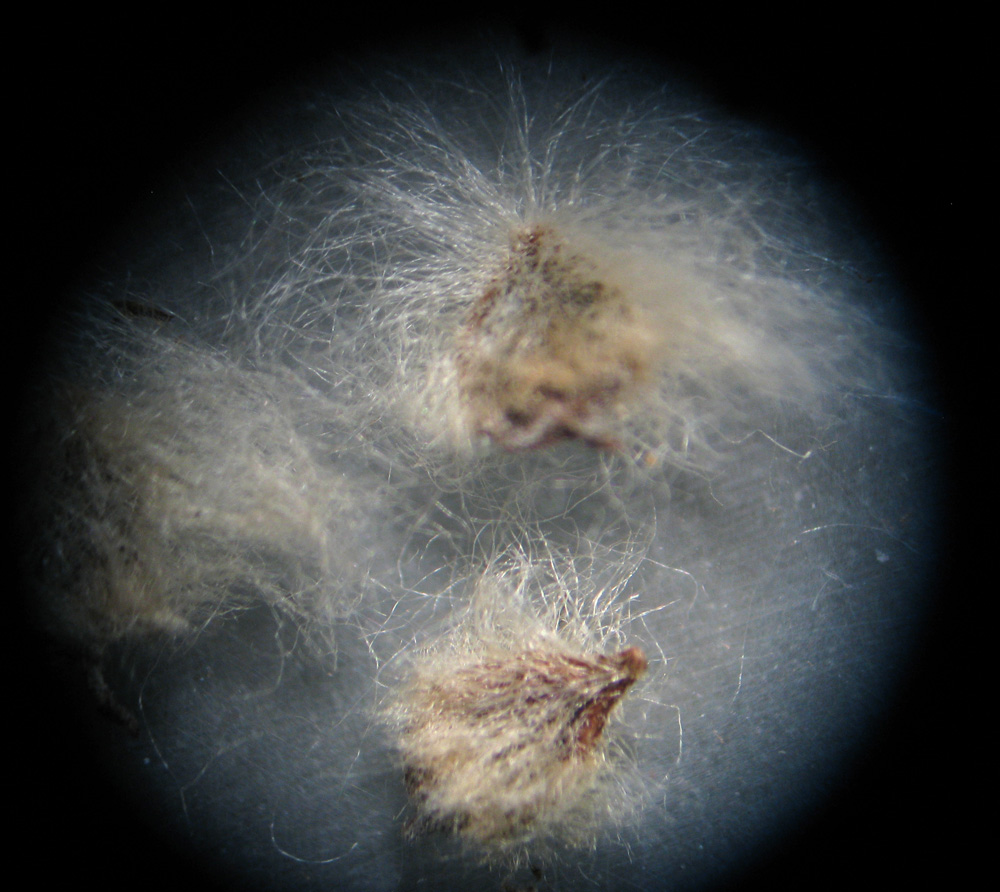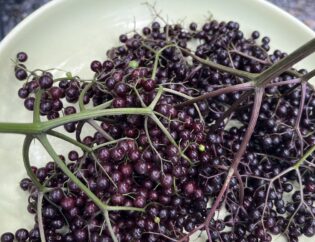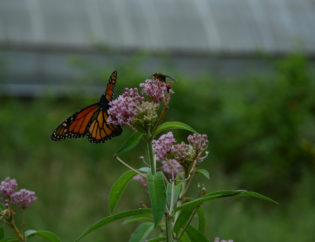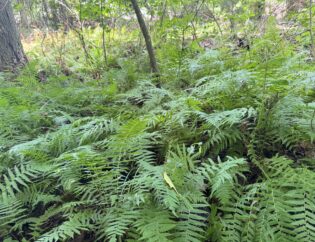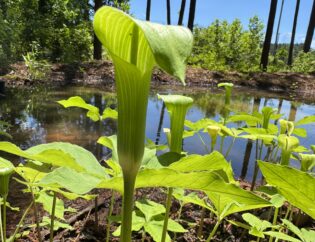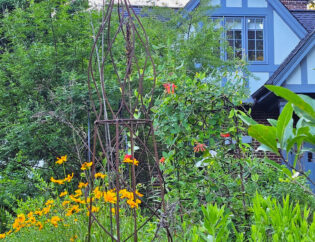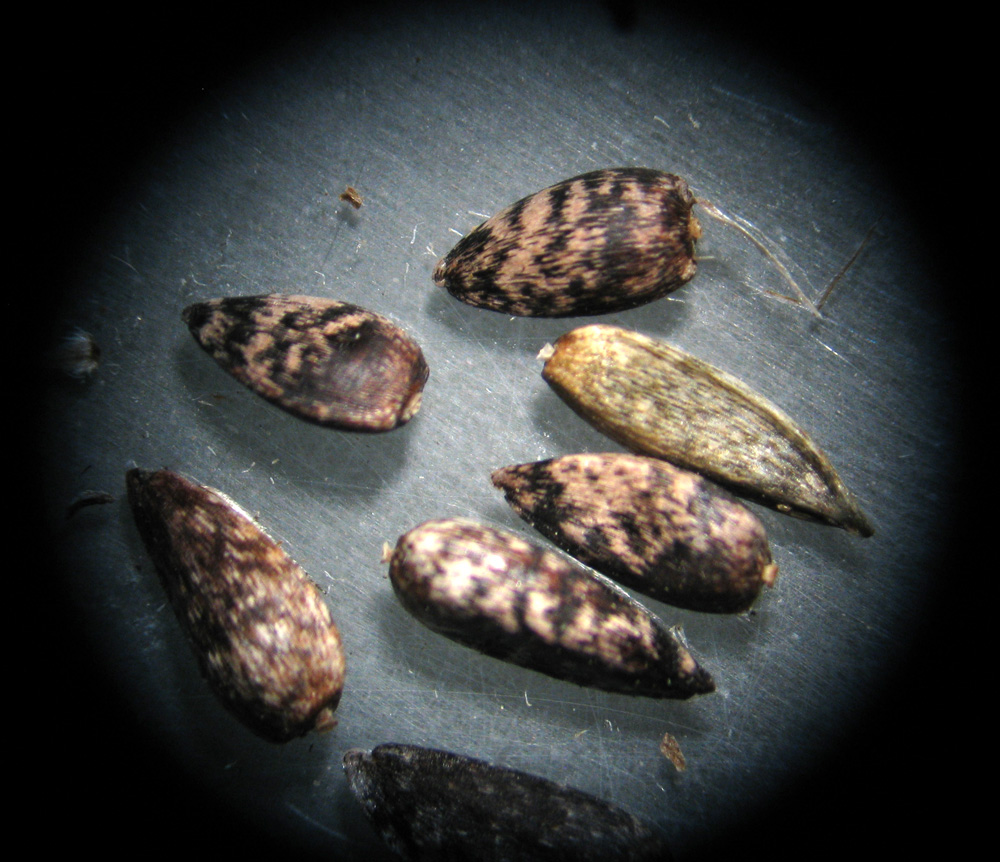 A familiar looking seed from the Woodland Sunflower (Helianthus divaricatus) as it resembles the big fat sunflower seeds you see in the grocery store from it’s cousin Helianthus annus.
A familiar looking seed from the Woodland Sunflower (Helianthus divaricatus) as it resembles the big fat sunflower seeds you see in the grocery store from it’s cousin Helianthus annus. 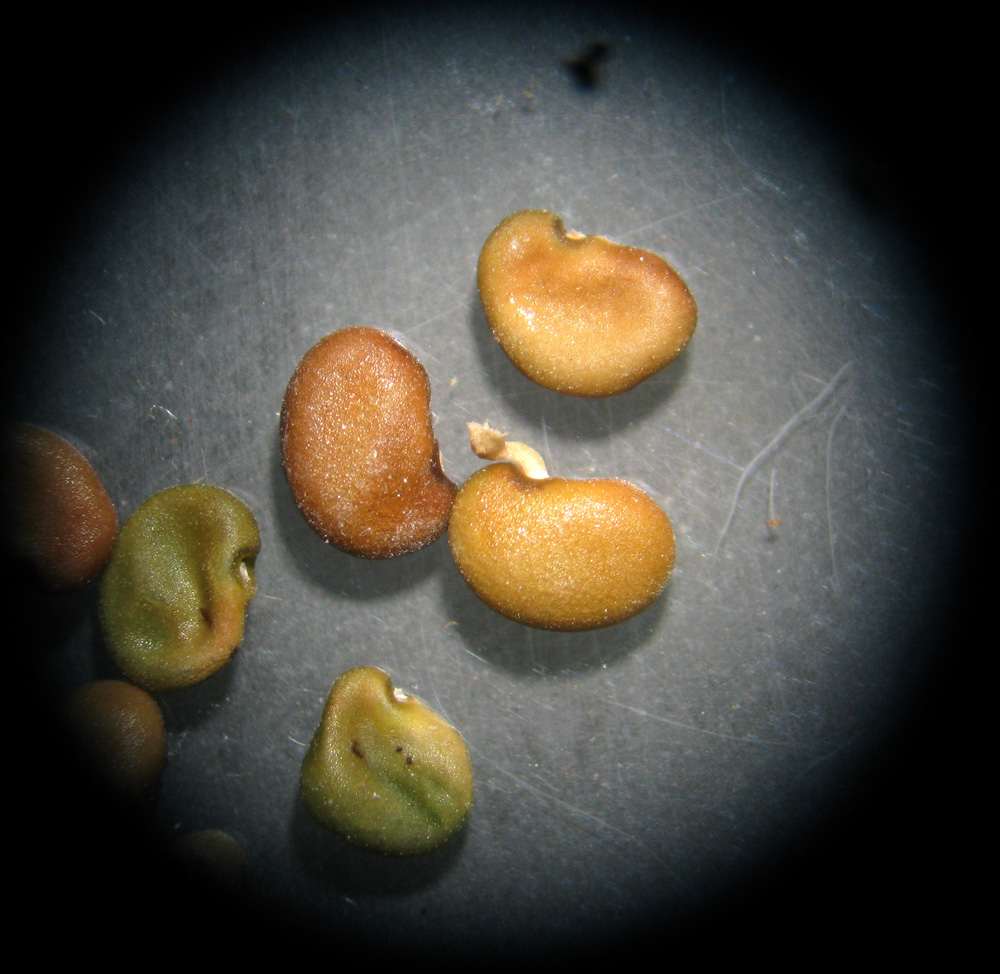
Another familiar looking seed from the bean family (Fabaceae), these are from Wild White Indigo (Baptisia alba). You can see the tiny umbilicus on the one where it was attached to the seed pod.
This seed and pod are from American Ipecac (Gillenia stipulata). It looks like a tiny brain to me. 
False Aloe (Manfreda virginica) seeds look very similar to the seeds of their cousin, Yucca, but just a bit smaller.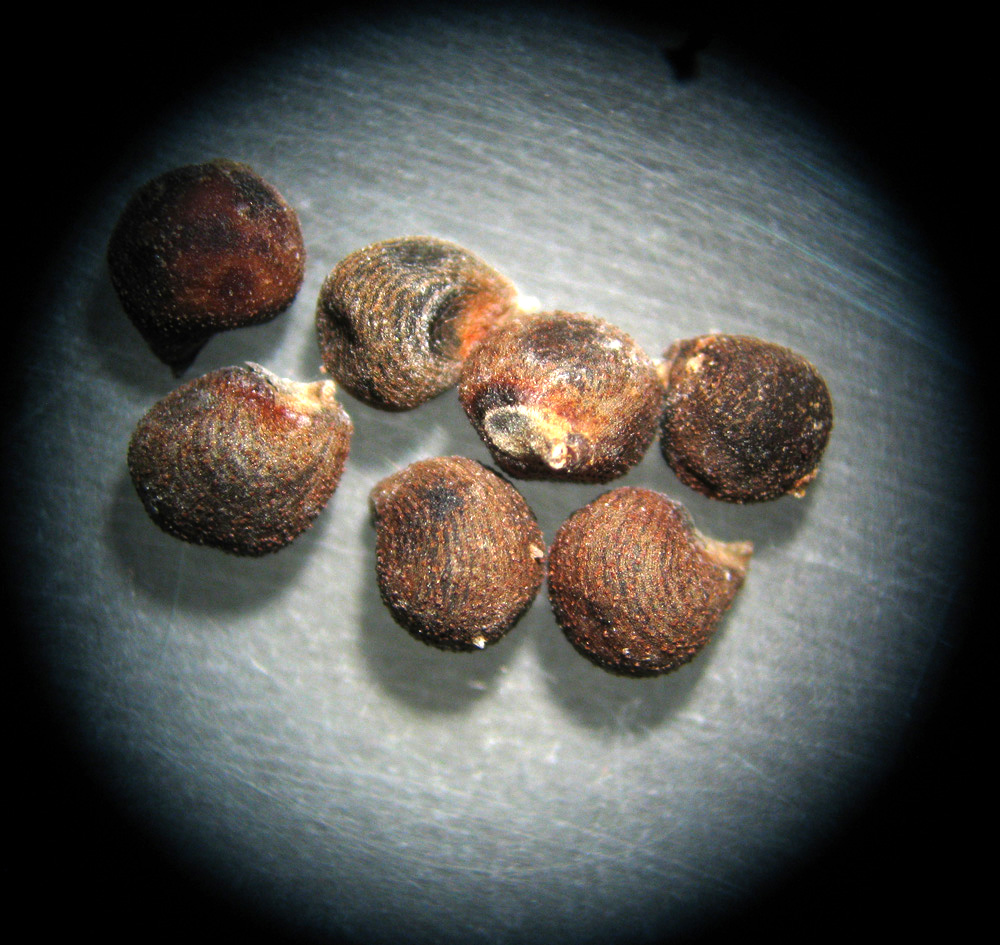
Swamp Hibiscus (Hibiscus grandiflorus) surprised me with these stripes. I was immediately reminded of clam shells and how they form by adding layer upon layer.
Blue Star (Amsonia tabernaemontana) is one of the few cylindrical seeds I’ve ever seen. They form stacked end to end in a tubular capsule.
By far the biggest seed I looked at, Sweetshrub (Calycanthus floridus) might have broken the 1 cm barrier. I have planted plenty of these seeds, but I had never noticed the tiny hairs. They just look smooth to the naked eye.
Like a crazy toy troll, these Tall Thimbleweed (Anemone virginianum) seeds have some wild hair. The mass of seeds looks like a puff of cotton on the plant, but here you can see the individual wiry hairs that encase the seed and help it float away on the breeze. 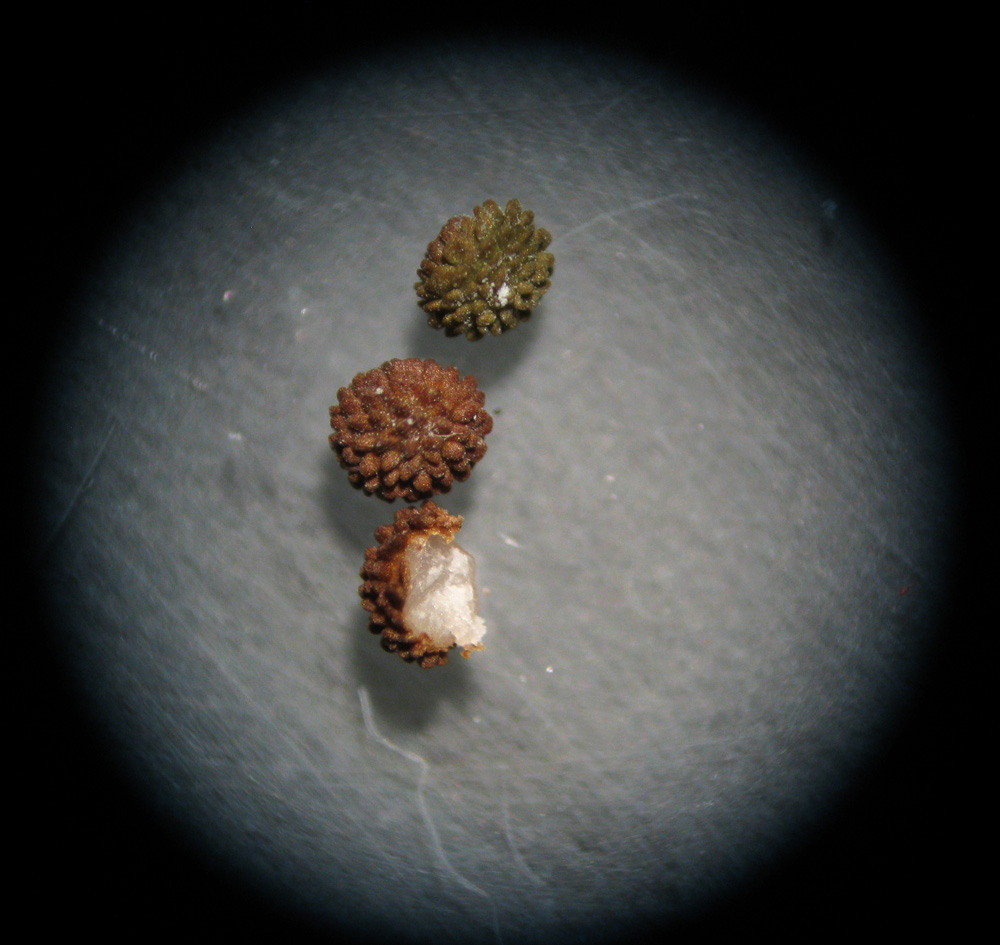
I accidentally crushed one of these Skullcap (Scutellaria nervosa) seeds while I was moving it with tweezers. The previous seeds were small, but these are tiny. I zoomed in another quarter turn on the microscope to take this. They look like perfect little spheres to the naked eye, but zoom in and they are anything but smooth. 
Another one with hair, but this one has a comb. These Blue Mistflower (Conclinum coelestrum) seeds also have hairs that are meant to catch the breeze and pull them along like an upturned umbrella. I was confused as to what that blurry violet stuff was, but then I realized that it’s the flowers! Each of those tiny flowers has a tube going down to an ovary. When pollen is transferred to the flower, it is transported down the tube and a seed forms. Every single one of those tiny little flowers was visited by a pollinator to make every single one of these tiny little seeds.
And speaking of pollinators, the ones who made all of these seeds possible, here is a bee. I’m not sure how she died (possibly all that arctic air), but she was on the porch and I suppose can live on in a blog post. All the little hairs coming out of the compound eye were very interesting to me. You can really see how pollen would get stuck to all those hairs.
There are plenty of seed heads out there right now. Break one open and look closely at what’s inside. Get out your hand lens or a magnifying glass. Thank a pollinator and then cast the seeds to the wind.

